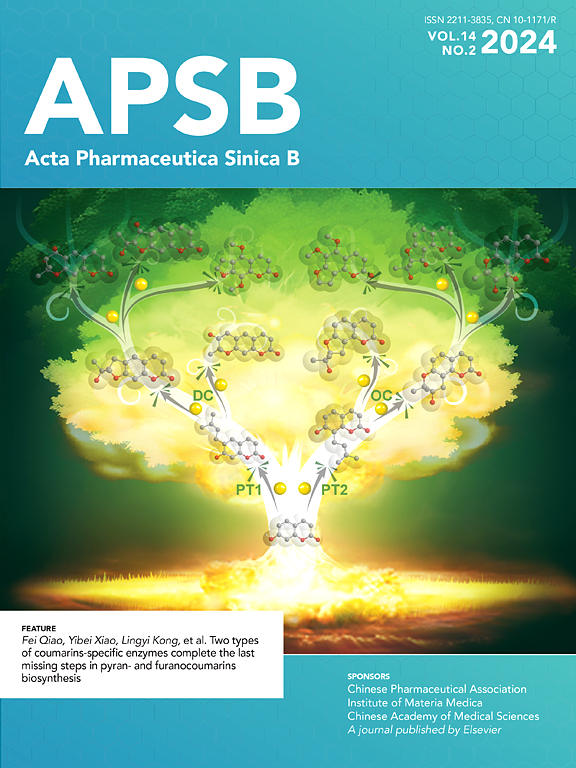Establishment of interpretable cytotoxicity prediction models using machine learning analysis of transcriptome features
IF 14.7
1区 医学
Q1 PHARMACOLOGY & PHARMACY
引用次数: 0
Abstract
Cytotoxicity, usually represented by cell viability, is a crucial parameter for evaluating drug safety in vitro. Accurate prediction of cell viability/cytotoxicity could accelerate drug development in the early stage. In this study, by integrating cellular transcriptome and cell viability data using four machine learning algorithms (support vector machine (SVM), random forest (RF), extreme gradient boosting (XGBoost), and light gradient boosting machine (LightGBM)) and two ensemble algorithms (voting and stacking), highly accurate prediction models of 50% and 80% cell viability were developed with area under the receiver operating characteristic curve (AUROC) of 0.90 and 0.84, respectively; these models also showed good performance when utilized for diverse cell lines. Concerning the characterization of the employed Feature Genes, the models were interpreted, and the mechanisms of bioactive compounds with a narrow therapeutic index (NTI) can also be analyzed. In summary, the models established in this research exhibit superior capacity to those of previous studies; these models enable accurate high-safety substance screening via cytotoxicity prediction across cell lines. Moreover, for the first time, Cytotoxicity Signature (CTS) genes were identified, which could provide additional clues for further study of mechanisms of action (MOA), especially for NTI compounds.

利用机器学习分析转录组特征建立可解释的细胞毒性预测模型
细胞毒性通常以细胞活力为代表,是评价药物体外安全性的重要参数。准确预测细胞活力/细胞毒性可以在早期加速药物开发。本研究利用4种机器学习算法(支持向量机(SVM)、随机森林(RF)、极端梯度增强(XGBoost)和光梯度增强机(LightGBM))和2种集成算法(投票和堆叠)整合细胞转录组和细胞活力数据,建立了50%和80%细胞活力的高精度预测模型,受试者工作特征曲线下面积(AUROC)分别为0.90和0.84;这些模型在用于不同细胞系时也表现出良好的性能。对所采用的特征基因进行了模型解释,并对窄治疗指数(NTI)生物活性化合物的作用机制进行了分析。综上所述,本研究建立的模型表现出优于以往研究的能力;这些模型可以通过细胞系的细胞毒性预测来精确筛选高安全性物质。此外,首次鉴定出细胞毒性特征基因(CTS),为进一步研究NTI化合物的作用机制(MOA)提供了线索。
本文章由计算机程序翻译,如有差异,请以英文原文为准。
求助全文
约1分钟内获得全文
求助全文
来源期刊

Acta Pharmaceutica Sinica. B
Pharmacology, Toxicology and Pharmaceutics-General Pharmacology, Toxicology and Pharmaceutics
CiteScore
22.40
自引率
5.50%
发文量
1051
审稿时长
19 weeks
期刊介绍:
The Journal of the Institute of Materia Medica, Chinese Academy of Medical Sciences, and the Chinese Pharmaceutical Association oversees the peer review process for Acta Pharmaceutica Sinica. B (APSB).
Published monthly in English, APSB is dedicated to disseminating significant original research articles, rapid communications, and high-quality reviews that highlight recent advances across various pharmaceutical sciences domains. These encompass pharmacology, pharmaceutics, medicinal chemistry, natural products, pharmacognosy, pharmaceutical analysis, and pharmacokinetics.
A part of the Acta Pharmaceutica Sinica series, established in 1953 and indexed in prominent databases like Chemical Abstracts, Index Medicus, SciFinder Scholar, Biological Abstracts, International Pharmaceutical Abstracts, Cambridge Scientific Abstracts, and Current Bibliography on Science and Technology, APSB is sponsored by the Institute of Materia Medica, Chinese Academy of Medical Sciences, and the Chinese Pharmaceutical Association. Its production and hosting are facilitated by Elsevier B.V. This collaborative effort ensures APSB's commitment to delivering valuable contributions to the pharmaceutical sciences community.
 求助内容:
求助内容: 应助结果提醒方式:
应助结果提醒方式:


